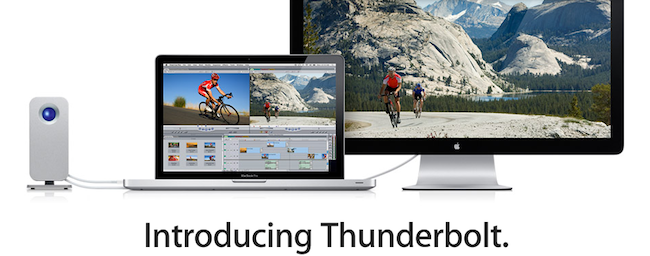According to iLounge, developers of peripherals for iOS and OS X claim high licensing and production costs for the relatively new AirPlay and Thunderbolt standards will slow down the adoption of such technologies from third-party manufacturers.
AirPlay, officially introduced with iOS 4.2.1 in November 2010, allows iOS users to beam audio or video content to compatible AirPlay speakers, AirPort Express stations, and Apple TVs 2nd-gen. By working closely with a company called BridgeCo, Apple built a wireless system that directly interacts with iOS and Mac devices to receive audio streams, as well as artist’s information and other playback data. For video, AirPlay enables users to send video stored locally or from the web to an Apple TV on the same WiFi network. Since AirPlay’s announcement in September at the iPod event, both Apple and BridgeCo stressed how third-party adoption would bring hundreds of AirPlay-enabled products to the market. Until now, however, most of these products have been in high-end range of consumer prices, with Philips only recently exploring price points below $300. iLounge reports implementing AirPlay adds $100 to the final product’s price:
Our sources have described the AirPlay technologies as considerably more expensive to incorporate than Apple’s standard docking Made for iPod/iPhone/iPad Dock Connectors, and noted that Apple is very heavily pushing developers to adopt the wireless technologies despite the costs involved.
Similarly, the cost of adding a Thunderbolt port to an external drive is said to roughly match the price of a low-end drive, which we assume is somewhere below $99 as well. For this reason, it’s likely Thunderbolt will only find its way in high-end professional products in the immediate future, and quite possibly the factor behind Apple’s decision to leave the iPad 2 without a Thunderbolt port, rather relying on wireless sync introduced with iOS 5 (you might remember rumors before the iPad 2 announcement suggested the device could get Thunderbolt – back then codenamed Light Peak).
A variety of Thunderbolt products from LaCie and Promise, among others, were unveiled in the past months, with all of them seemingly oriented to the pro market and audio/video professionals. Thunderbolt is an I/O technology developed by Intel and Apple that allows for bidirectional 10 Gbps connection over a cable, plus a 10 Watt feed to power other devices and attached peripherals.


